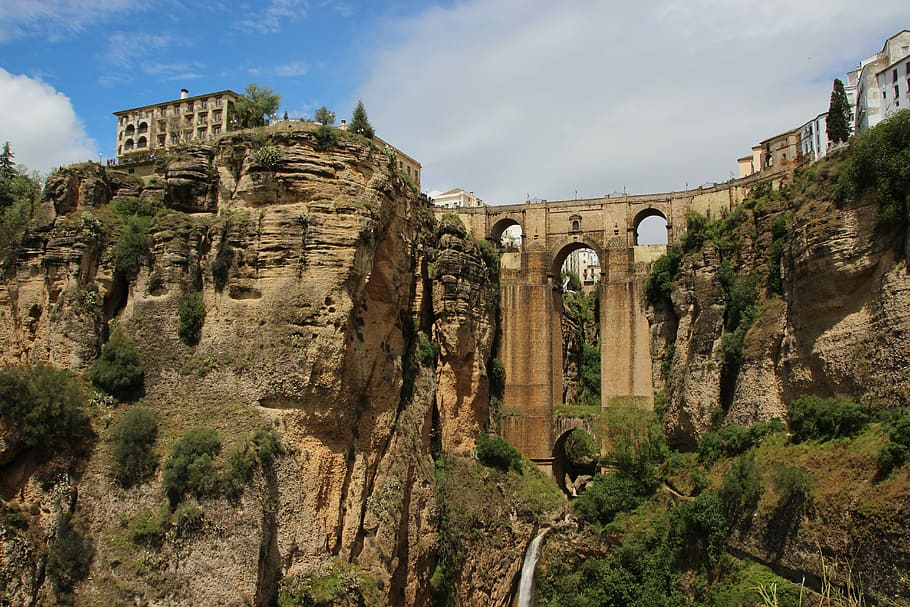Unit 1 Overview: The Middle Ages (ENG)
3 min read•january 13, 2023
AP Spanish Literature 💃🏽
24 resourcesSee Units
Unit 1 Overview: The Middle Ages and Their Historical Context 🏰
The literatures and cultures of the Spanish-speaking world were not born in a vacuum. The Spanish language formed over centuries of migrations, imperialism and the coexistence of various cultures. It's impossible to assign a date 📆 to the birth of Spanish as a language 💬, but certainly, a Spanish-speaking identity began to form during the time known as the Middle Ages (el Medioevo) 🏰
🇪🇸 What is known today as “Spain” was born on the Iberian Peninsula, the destination 📍 of various migratory groups after thousands of years of history ⚔️ The Roman Empire introduced vulgar Latin 🔡to the peninsula, which would then merge with local languages to create a variety of dialects 🗣️ that serve as the roots of today's Spanish.

Ronda, Spain. Image courtesy of pxfuel.
Then, the conquest 🤺 of the Iberian peninsula by the Muslims ☪️ from 711 CE injected a new vocabulary 💭 into early Spanish. For this reason, the works "Exemplo XXXV: Lo que aconteció a un mozo que casó con una mujer muy fuerte y muy brava" and "El romance del rey moro" 😘 point out the characteristics of medieval Spain, especially the coexistence ("convivencia") of cultures and practices that mark a new “Spanish” identity.
Mnemonic 🔤
Use the mnemonic MARCA to remember 🤔 the characteristics of the medieval literature:
- ❤️ Moraleja: medieval works typically come with a lesson to learn or a moral to uphold.
- 🕌 Arabes: the presence of Arabic/moorish people is usually biased by Christian writers.
- ⚔️ Reconquista: the works take place during the Reconquista of Spain from the Muslim 👳♂️ moors.
- 🤲 Convivencia: the works also demonstrate different levels of peace and conflict between Christians and Muslims coexisiting.
- ⬇️ Al-Andalus: The Muslim empire of Spain, whose culture influences Christian culture (El Conde Locanor) and whose collapse united the Christians ("El rey moro").

Alhambra Fortress, Granada, Andalucía, Spain. Image courtesy of Wikimedia.
Timeline ⏲️
🤜 418CE: The kingdom of the Visigoths begins to take hold of the peninsula.
🏰 460CE: The decline of the Roman Empire leaves the peninsula governed by the Visigoths and their affiliated kingdoms 🤴
✝️ ~ 530CE: By this time, Catholic Christianity became the main religion 🛐 for the peninsula.
⚔️ 711CE: Muslim Arabs invade Spain from the south and defeat the Visigoth king, Rodrigo. Quickly, Muslims conquer almost the entire peninsula, except the kingdom of Asturias in the northwest, and establish the kingdom 👑 of Al-Andalus.
⏬ 720-1212CE: The Christian kingdoms of northern Spain gradually expel Muslims, beginning the process of the Reconquista, or the 7th century period in which Christians reconquered the Muslim peninsula.
🔬1212-1492CE: Al-Andalus experiences significant advances in science, mathematics and architecture, while in many places on the peninsula Muslims and Christians lived in peace. However, gradually the Christians of the north reconquer their territory until leaving only the Muslim kingdom of Granada in the south of the peninsula.
🔚 1480-1492CE: The Catholic Monarchs, Isabel de Castilla 👸 and Fernando de Aragón 🤴, defeat the Muslim forces of the kingdom of Granada, which marks the end of the Reconquista and the unification of the entire Iberian Peninsula under the name of Spain.
Browse Study Guides By Unit
🏇Unit 1 – La época medieval
🛳Unit 2 – El siglo XVI
🖌Unit 3 – El siglo XVII
✏️Frequently Asked Questions
🙏Exam Reviews

Fiveable
Resources
© 2023 Fiveable Inc. All rights reserved.